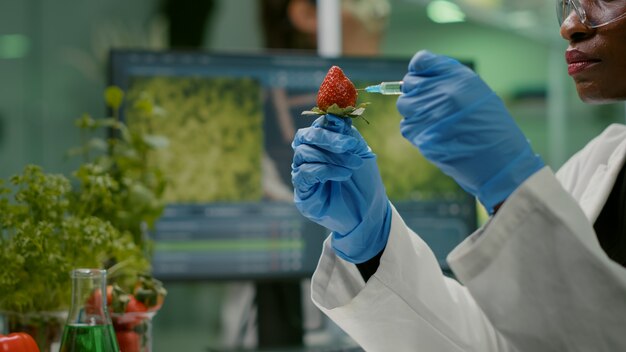
Sponsored article
The food processing industry in 2025 is not slowing down. Cutting-edge technologies are revolutionizing how food is produced, packaged, and quality-controlled. Innovations in food processing driven by automation, artificial intelligence, and sustainability are addressing market demands while boosting efficiency and safety. Here are five new solutions in the food processing sector that are leading the way this year!
One of the most groundbreaking food processing machinery trends for 2025 is the adoption of intelligent sorting systems based on AI and machine vision. These systems use deep learning algorithms to identify and classify products in real time based on color, shape, size, and even surface texture. Their ability to detect minimal deviations allows for removing products that don’t meet quality standards, significantly reducing raw material waste.
Integrated with cloud computing, sorting data can be analyzed to optimize production. These systems are especially popular in the fruit and vegetable sector and in fish and meat processing, where precision and speed are crucial.
As the popularity of fermented foods grows—from kombucha to plant-based products using bacterial cultures—innovative fermentation bioreactors have become essential new machines in the food processing landscape. The latest fermenters in 2025 are equipped with biological and spectrophotometric sensors that continuously monitor fermentation.
These devices track parameters like pH, temperature, and oxygen levels, and can automatically adapt to changing conditions, minimizing the risk of production errors. This results in improved product consistency, safety, and sensory quality.
While 3D printing is not new to food production, 2025 marks a new era for this technology. The latest 3D food printers can now create complex structures from plant-based materials, dairy, and insect proteins while offering automated nutritional value control.
Used primarily in personalized food production—such as catering, hospitals, and schools—these printers can optimize ingredient combinations to meet specific dietary needs, including calorie count, macronutrient composition, and allergens. This is a key example of new technology in the food processing industry reshaping how we eat.
Modern packaging lines in 2025 combine MAP (Modified Atmosphere Packaging) technology with protective gas recovery systems. Thanks to smart sensors and valves, these lines can create ideal packaging conditions (e.g., higher nitrogen or lower oxygen levels) and recycle used gases for reuse, making the process more economical and environmentally friendly.
These systems extend shelf life and reduce food waste while lowering the carbon footprint. They offer a sustainable new solution in the food processing industry when paired with biodegradable packaging.
The rising demand for automated yet flexible production lines has led to the widespread deployment of cobots—robots designed to work alongside humans. In 2025, these machines are more advanced than ever, equipped with force sensors, gesture recognition systems, and self-learning interfaces.
Cobots assist with repetitive, precision-demanding tasks such as portioning, labeling, and packaging. Their modular design allows for quick adaptation to production changes without long downtimes. They enhance safety and ergonomics and reduce operational costs, making them a cornerstone of innovations in food processing.
The year 2025 brings rapid digitalization and automation to the heart of food production. AI, robotics, 3D printing, and sustainable packaging systems are just a few examples of new technology in the food processing industry redefining the landscape. Investing in new machines in the food processing sector is no longer just about staying ahead, but meeting rising consumer expectations and environmental challenges. If your business plans to grow in this space, it’s essential to closely monitor these food processing machinery trends 2025—the future of food is already here! You can also take a look at the offer of a machine manufacturer such as NOMA, and perhaps you will find a solution that meets your expectations.